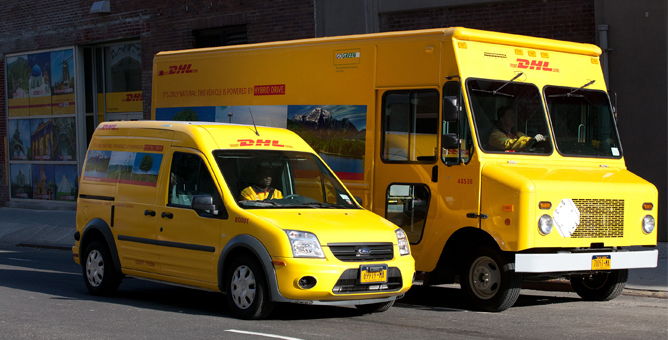Amidst all the alarming signs of climate change and increasing global warming, the carbon footprint of automobiles and various other forms of transportation have come under fire. They have been largely blamed for the worsening of our environment, other than the industrial carbon footprint. But if one was fair in assessing the contributions of automobiles and other forms of transport, then one has to acknowledge the progress made over the decades. Imagine the steam engines and the heavily polluting automobiles not too long back and imagine the much cleaner and greener vehicles today. The environment controls have become more stringent and the modern vehicles being manufactured today are certainly much better, even when compared to the ones manufactured a decade back.

The global shipping and logistics industry has a substantial contribution to pollution, global warming and the carbon footprint. That is precisely why many international courier companies like DHL have been working on greener vehicles. But the question is, can delivery vehicles really be carbon free?
The question has been fittingly and evidentially answered by DHL. And one doesn’t have to look out for some distant experiments. Sending a parcel to Germany would provide the answer if delivery vehicles can be green or carbon free.
Deutsche Post DHL had launched a pilot project in May 2013 which aimed to offer carbon-neutral delivery services in Bonn. In its first phase, small electric vans weighing up to 5.2 tonnes and different kinds of parcel delivery vehicles from Renault, Iveco and Mercedes along with a fleet of 20 StreetScooters were rolled out to cater to Bonn and its surrounding areas. The first phase went on to become a roaring success and set the benchmarks for many others to follow.
The project also aimed at enhancing e-mobility and widespread use of electric vehicles. The project has also helped the manufacturers or automakers to understand how their batteries and the electric car engines handle the needs of the couriers, such as frequent starts and stops, different kinds of maneuvering than normal driving and also the load bearing capacity vis-à-vis the power stored.
The second phase of the project was launched in 2014 when forty new vehicles were added to the existing fleet. The technologies in the green vehicles matched the expectations and exceeded in some cases and that paved the way for the third phase which was launched in 2015, adding twenty more electric delivery vehicles.
If you are wondering what kind of impact this project has had, the environment is being saved of more than 500 tonnes of CO2 emissions.










Comments are closed.